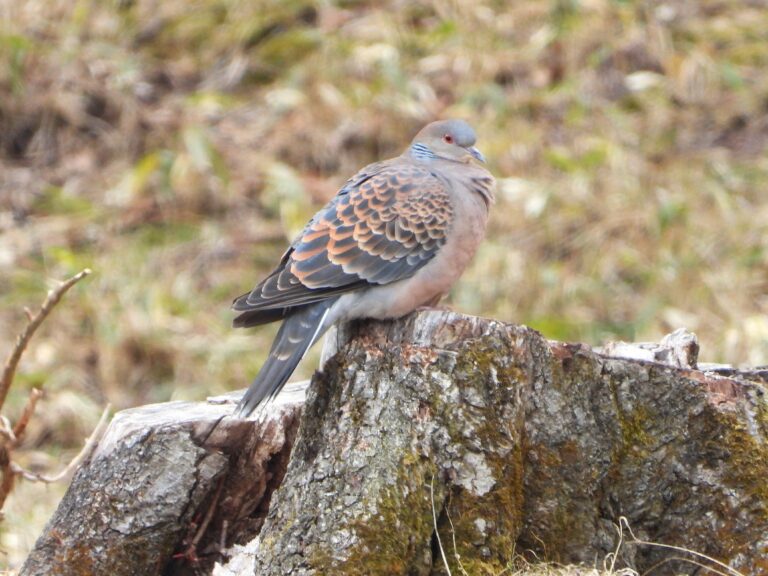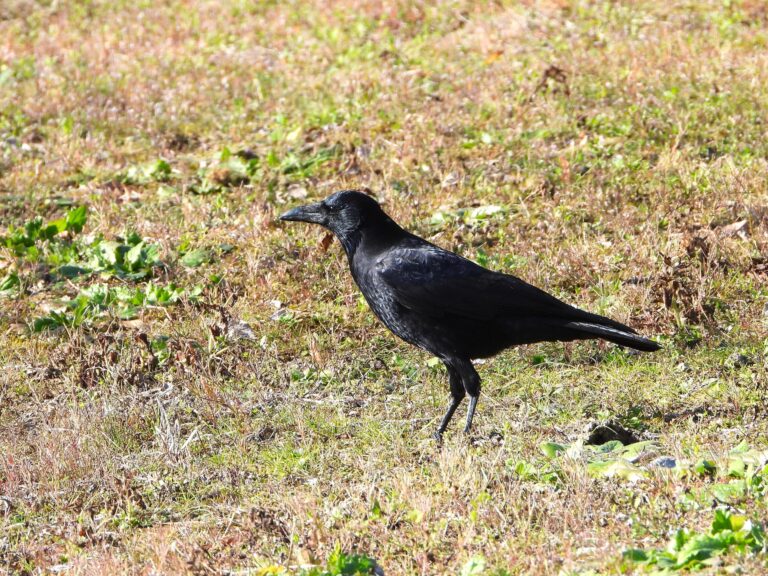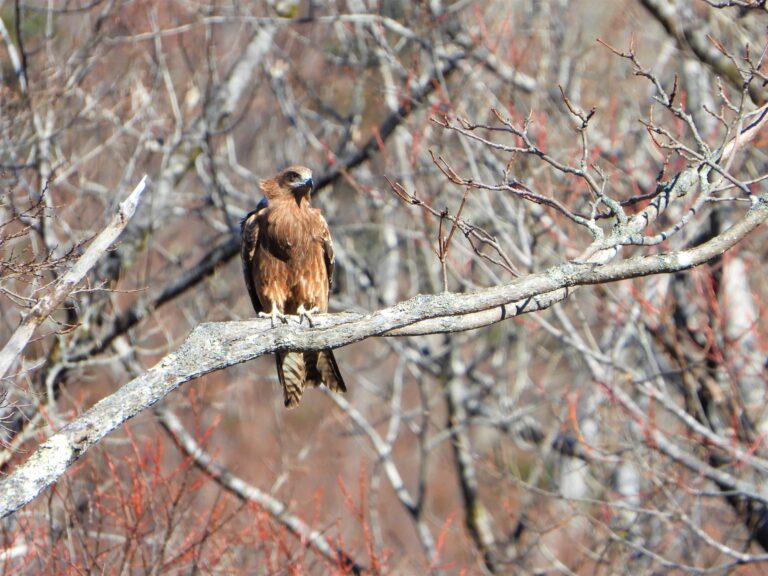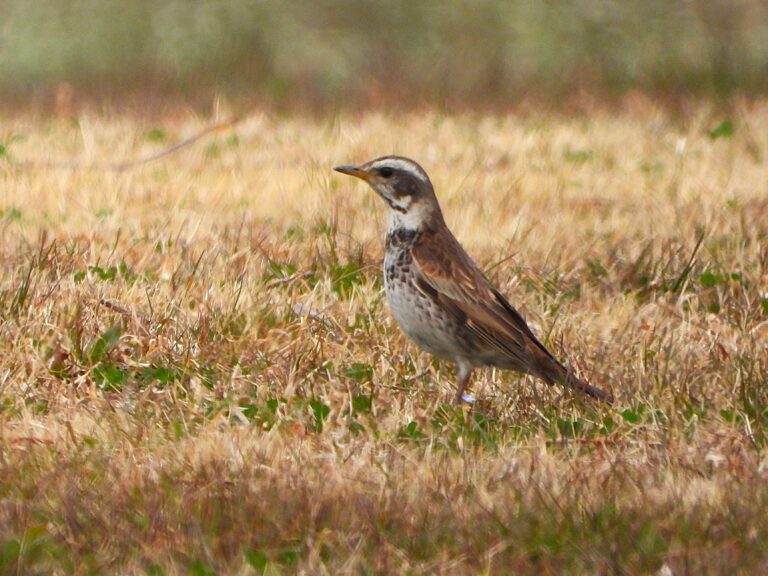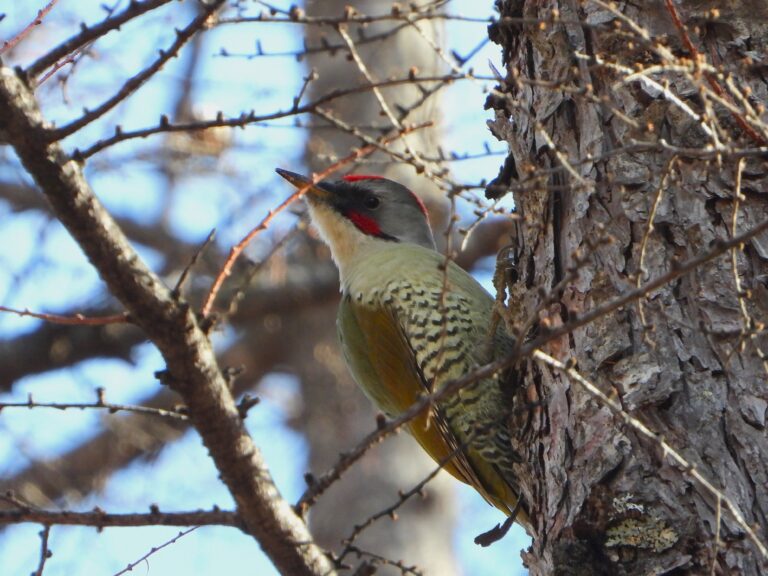Meadow Bunting (Emberiza cioides) – Wildlife of Japan
Introduction
The Meadow Bunting is one of Japan’s most familiar songbirds, often seen perched on telephone wires or fences overlooking open fields.
With its bold face pattern, rufous-brown plumage, and clear song echoing through the countryside, this small bunting represents the beauty of Japan’s farmlands and meadows.
It is found across most of the Japanese archipelago and remains easy to observe even for beginners.
Appearance
Adults measure about 16–17 cm in length.
The male shows a distinctive black-and-white facial pattern: white eyebrow and cheeks divided by a bold black moustachial stripe, with a grey nape and rufous back streaked with dark lines.
The female is duller overall, with softer brown tones and weaker facial markings.
This long-tailed bunting often perches upright on open branches or wires, giving it a very characteristic silhouette.
Habitat & Distribution
The Meadow Bunting lives in open country — farmlands, grasslands, riverbanks, and forest edges.
It avoids dense woods and prefers sunny, low vegetation.
In Japan it is resident through Honshu, Shikoku, and Kyushu, while populations in Hokkaido are summer visitors, arriving to breed from spring to autumn.
Behavior
Males sing from high perches such as wires or tall stems, proclaiming their territories with a clear, repetitive song — often described in Japanese as “chi-chi-chi-chiyui.”
The call is a short two-note “chi-chi,” easily distinguished from the single chirp of sparrows.
They feed mainly on the ground, walking among grasses to pick seeds, and occasionally catch insects or earthworms during the breeding season.
During winter they become less territorial and may forage in loose groups.
Diet
Seeds of grasses and herbs form the majority of the diet, particularly in winter.
In summer and during chick-rearing, insects such as beetles, caterpillars, and small grasshoppers are added to provide protein.
Reproduction
Breeding occurs from April to July.
The nest is a small cup made of grasses and roots, placed low in dense vegetation or at the base of a shrub.
Females lay 3–5 eggs and incubate them for about 11 days; both parents feed the chicks with insects until they fledge after another 10–12 days.
Males often continue to sing nearby during incubation, maintaining the territory.
Conservation
The Meadow Bunting remains abundant across Japan and is listed as Least Concern by BirdLife International.
However, local declines have been noted in parts of East Asia due to farmland loss and pesticide use.
Because it depends on open, lightly vegetated landscapes, maintaining grassland and edge habitats is important for its conservation.
Author’s Impression
On winter days, I often see Meadow Buntings perched on electric wires or signboards along the riverside paths.
Sometimes they even come quite close, showing their gentle expressions and lively curiosity.
They are small, charming birds that bring warmth to the quiet scenery of a cold day.
Their calm presence and soft calls make winter walks feel more alive and peaceful.


